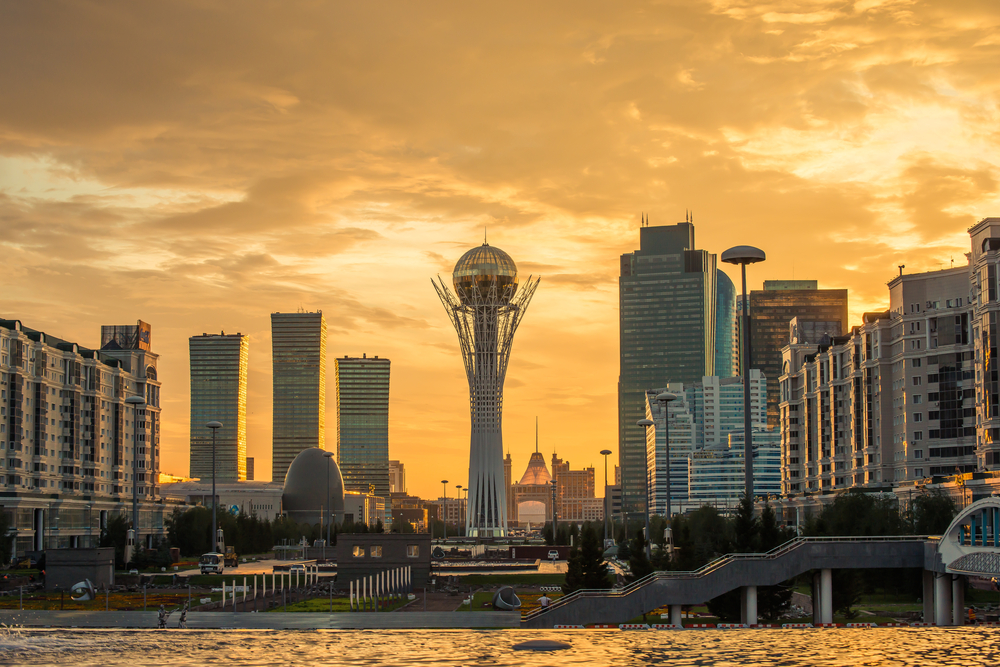In late February and early March of this year, U.S. Secretary of State Antony Blinken visited Kazakhstan and Uzbekistan in what US media touted as a major upgrade of American engagement in the region. This assessment is quite accurate because although the United States has diplomatic relations with all the former “-stans” of the Soviet Union, it has long regarded Central Asia as peripheral to its diplomatic, economic, and strategic interests. In the past, Central Asia was important to the U.S. largely as a staging area to support the war in Afghanistan. Blinken’s visit, which was meant to coincide with the one-year anniversary of Ukrainian conflict, nor the U.S-led War on Terror in Afghanistan twenty years prior. Instead, the visit was, in many ways, a fresh start to relations that have remained largely passive and distant, and represents Washington’s realization that Central Asia, which has long been under the influence of Russia and China, is a geopolitically important area for a new multipolar world.

Photo credit: Shutterstock.
Anyone keeping up with the geopolitical changes that have swept across Central Asia and much of the former Soviet Union over the past two to three years has no doubt heard the word “multipolarism” frequently mentioned by political leaders, policymakers, and even the occasional academic fortunate enough to reach a public audience. Multipolarity is a term used in studies of international relations to identify the presence of anywhere from three to five major powers that exert a significant amount of influence, leverage, and authority over other states. This is distinct from a “bipolar” system which features two competing powers of equal capability; much like the United States and the Soviet Union during the Cold War. It is also different from “unipolarism”, which is a peculiar situation where one power possesses disproportionate degrees of hegemony over all other states; like the United States enjoyed throughout most of the 1990s.

Michael Rossi.
The international system changes from one power-alignment to the next, depending on the capabilities of existing powers and the ambitions of rising ones. Thus, the “multipolar” world of today, sees the United States retaining a leading international role, but is increasingly having to share the international stage with other rising regional powers like China, Russia, and India. None of these countries may have the ability to challenge the United States as a global power, but they certainly exert enough regional influence in the Middle East, Africa, South Asia, East Asia, and Central Asia, to make Washington realize they no longer have right-of-way diplomacy.
How does this affect Central Asia in general and Kazakhstan in specific? The first thing to note is that the United States is somewhat of a diplomatic late-comer to the region, so instead of an existing power having to share the diplomatic arena with newer powers, the U.S is entering the region to balance Russia’s and China’s participation in the region. While the former enjoys sustained diplomatic engagement since the end of the Soviet Union, the latter has positioned itself as the primary facilitator of transnational infrastructural projects. If anything, U.S presence in the region is, comparative to the other two, largely through soft power initiatives in consumerism and education, although it has also cooperated in initiatives in combating terrorism.
But soft power has always been America’s primary advantage. Political officials and policymakers frequently bring up problems of limited political rights and civil liberties in regions like Central Asia; however, Washington has been much more successful in negotiating agreements for American business investments, particularly in the entertainment and service sectors. The second point to note is that American soft power has long been regarded as a successful alternative to Russian and Chinese markets.
Third, America in a post-unipolar world is realizing, whether it wants to or not, that its diplomatic leverage, national reputation, and overall brand image has lessened significantly in the past fifteen years. To be sure, it still retains prestige and importance, but a multipolar world now necessitates American foreign policy to forego coercive diplomatic tactics with states it sees as below them, to now engage on a more equal footing. This is good news for Central Asia, as the five former Soviet republics – particularly Kazakhstan and Uzbekistan, are eager to present themselves as dynamic international actors with much to offer by way of entrepreneurialism, tourism, and educational exchange.
In other words, a multipolar world has given Central Asia the ability to treat with a variety of international partners interested in engaging with the region. Russia is, and will remain, a primary trade and economic partner for all five states for the foreseeable future. This has less to do with any perceptions of Russian dominance in the region as it does with institutional and cultural legacies of more than a century of interconnectivity. China is widely regarded as the economic power with the capabilities of expanding large-scale industrial projects across the region in a network of roads, pipelines, and buildings. It is the United States that still possesses the lucrative advantage of soft power consumerism that ordinary people enjoy on an everyday basis. A Starbucks or an Apple store certainly reflects the growth of middle-class consumerism that forms the foundation of any modernizing state.
The author is Michael Rossi, a professor at Rutgers University in the United States, and University Instructor at Webster University Tashkent. His academic interests cover studies in Comparative Politics and International Relations of Europe, the former Soviet Union, and the Middle East.

